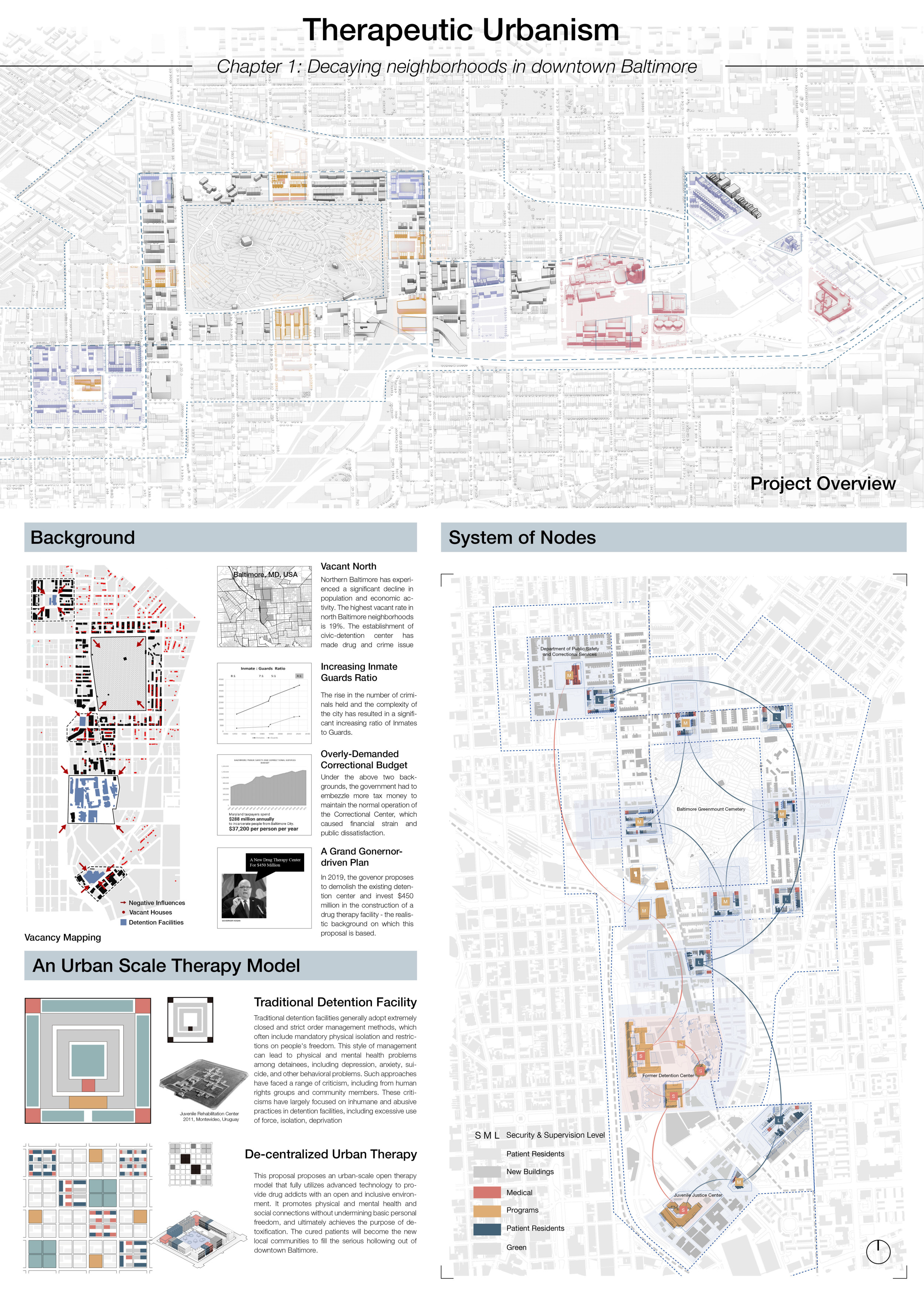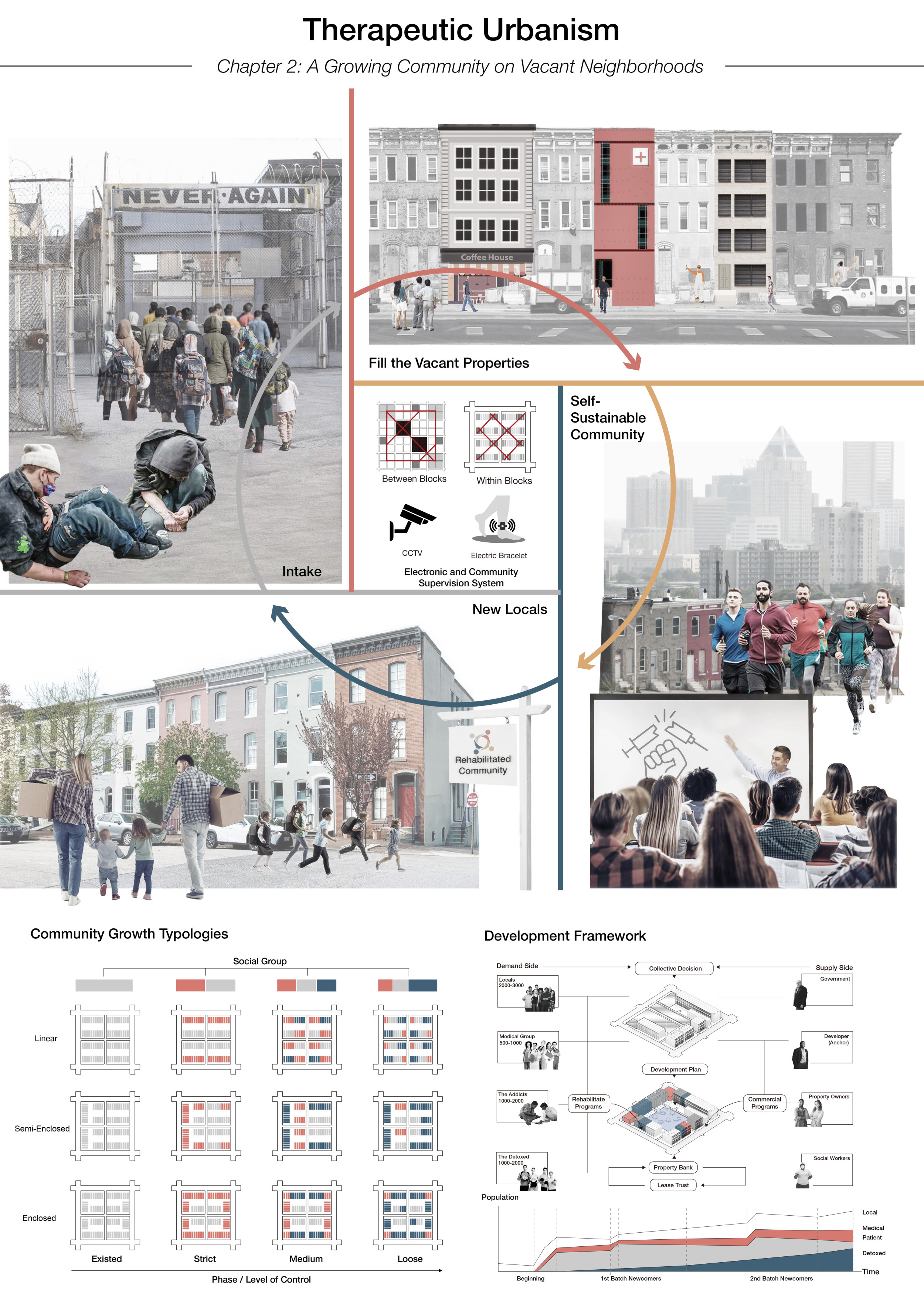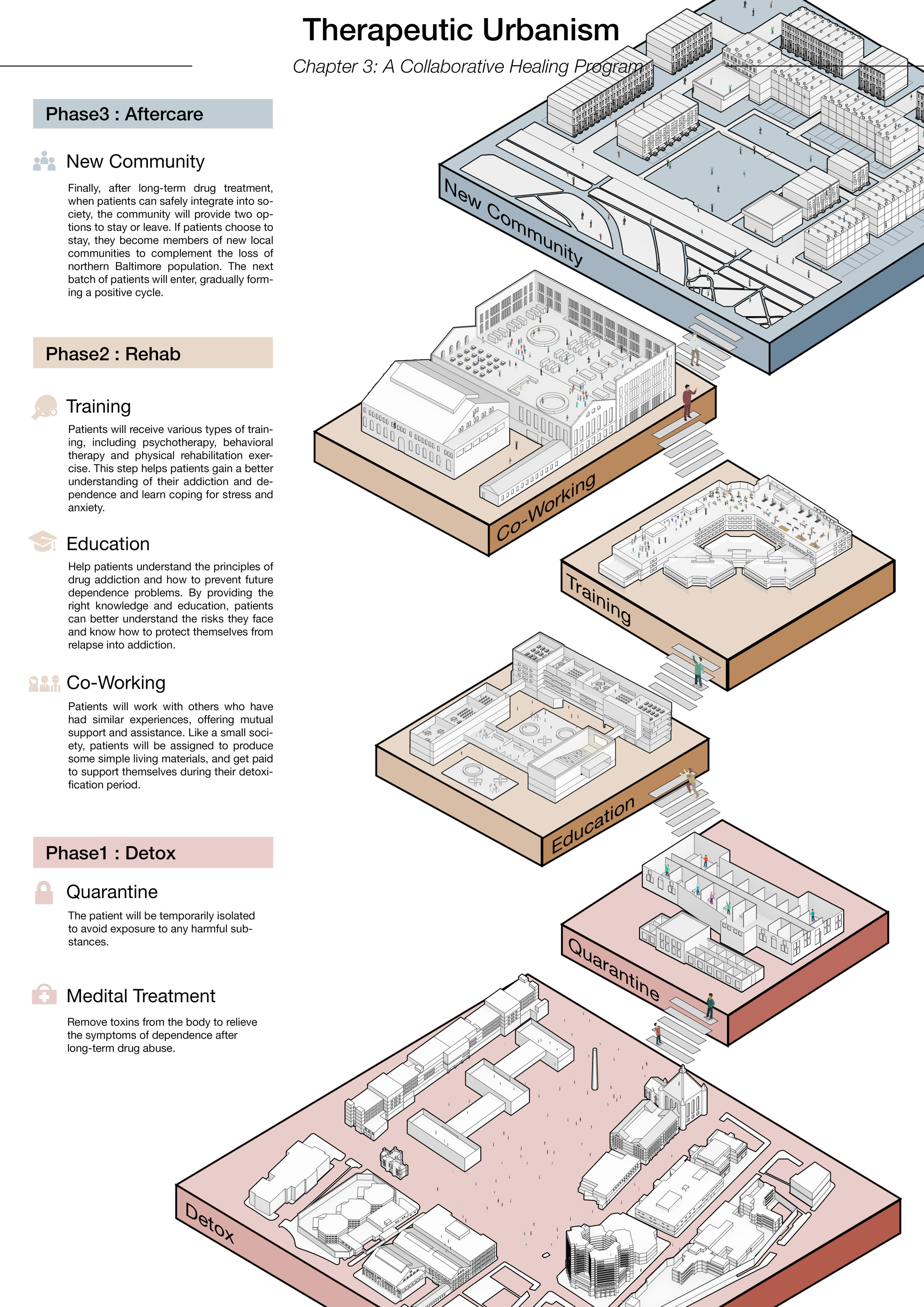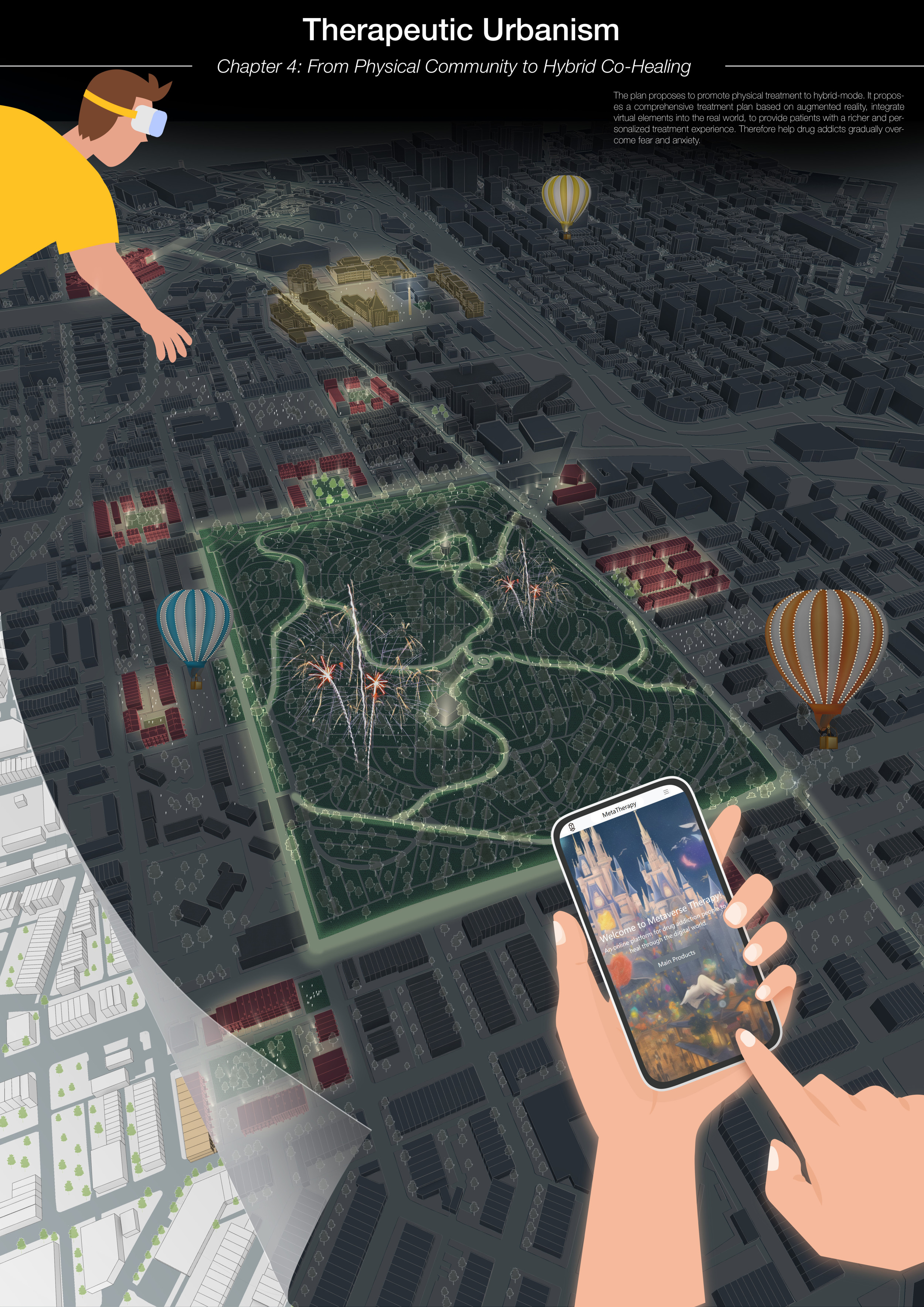Urban Therapy
# Therapeutic Urbanism
# Background
The site of this project is located in Northern Downtown Baltimore, a historical town in Maryland, USA. Due to the urban shrinkage caused by the suburbanization of American cities, the site has experienced a significant decline in population and economic activity. The highest vacant rate in north Baltimore neighbourhoods is a staggering 19%. What makes matters worse, the expansion of civic detention centers since the late 20th century has made local drug and crime issues worse. The rise in the number of criminals held and the complexity of the city has resulted in a significantly increased ratio of Inmates to Guards.
Under the above background, the government had to embezzle more tax money to maintain the normal operation of the correctional center, which caused financial strain and public dissatisfaction. The facilities finally shut down in 2015. In 2019 the governor proposes to demolish the existing detention center and invest $450 million in the construction of a drug therapy facility. This is the realistic background on which this proposal is based.

# Project Description
The project challenges the proposed new city therapeutic center, which is organized as an enclosed campus that reuses the old detention center. The plan does not benefit the neighborhoods nor answer the critical issue of urban vacancy. This project proposes an innovative urban-scale therapy model that set up a sustainable program to convert formal drug addicts people to future local communities.
The proposal promotes physical and mental health and social connections without undermining basic personal freedom, ultimately achieving detoxification. With the latest supervision technologies, such as electric bracelets, patients do not need to suffer a high level of movement control. They could move more freely between communities and live a more normal life than traditional programs.
Based on the premise above, the project forms new typologies of urban spaces that serve as caring facilities for drug addicts, and relocate and restructure therapeutic programs to an organic network between communities and the former detention facilities.

# System of Nodes
The project proposes two new urban elements that grow along with the node system:
# 1 Rehab residential blocks
The "rehab blocks" are transformed from local blocks, accommodating residents from 4 major steps in rehabilitation: intake, detox, rehab, and aftercare. The blocks are designed to maintain a certain level of security with a dynamic ratio between caregivers, detoxed people, and patients.
# 2 Therapeutic-public spaces
Instead of occupying the building, therapeutic programs including training, working, and medical treatments are partially inserted into existing detention facilities, making room for further developments.
Both categories of urban elements work together closely. The residential nodes (marked in blue in the master plan) and the public nodes (marked in red) form an interconnected node system. The notes with the highest safety level are arranged in the inner part of the network, receiving supervision from surrounding neighborhoods.

# Vision: From Physical Community to Hybrid Co-Healing
Apart from physical programming, the plan proposes to elevate physical treatment to hybrid mode. It proposes a comprehensive treatment plan based on augmented reality, integrating virtual elements into the real world, to provide patients with a richer and more personalized treatment experience. Therefore help drug addicts overcome fear, loneliness, and anxiety, in the long journey of rehabilitation.
